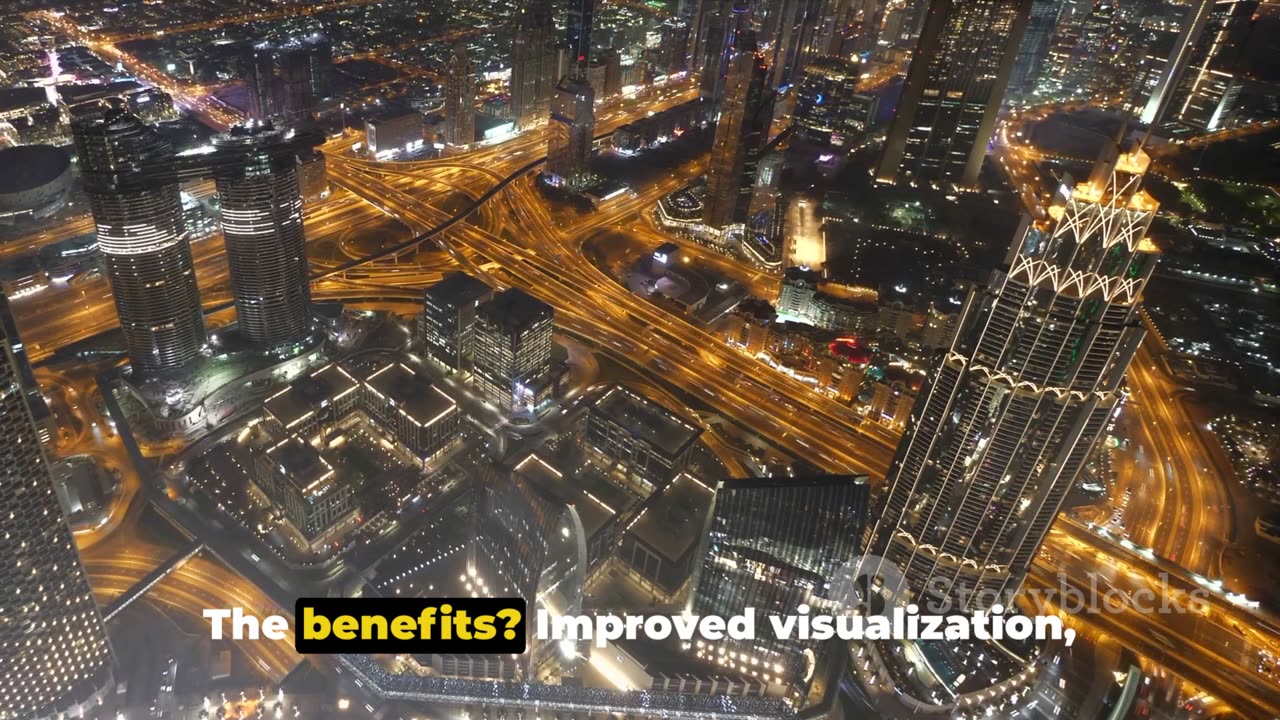Premium Only Content

BIM for Sustainable Infrastructure: Optimizing Energy and Resources
"Building a Sustainable Future: Leveraging BIM for Energy Efficiency and Resource Optimization in Infrastructure Projects
Building Information Modeling (BIM) is a powerful tool that can revolutionize the way infrastructure projects are designed, constructed, and managed. When used effectively, BIM can significantly enhance energy efficiency, resource management, and sustainability in infrastructure projects. Here's how:
Integrated Design Process: BIM enables architects, engineers, and contractors to work collaboratively from the early stages of a project. This integrated approach allows for better coordination and decision-making regarding energy-efficient design strategies, material selection, and resource management.
Energy Simulation: BIM software often includes energy analysis tools that can simulate the energy performance of a building or infrastructure project. By analyzing factors such as building orientation, envelope design, and HVAC systems, designers can optimize energy efficiency and identify opportunities for improvement.
Lifecycle Assessment: BIM facilitates the integration of lifecycle assessment (LCA) into the design process. By considering the environmental impacts of materials and construction methods throughout the lifecycle of a project, designers can make informed decisions to minimize resource consumption and environmental footprint.
Parametric Design Optimization: BIM allows for parametric modeling, where design parameters are linked to performance criteria such as energy efficiency. This enables designers to explore a wide range of design alternatives and quickly identify the most sustainable solutions.
Resource Management: BIM can be used to track and manage resources such as water, materials, and energy throughout the lifecycle of a project. By implementing features like water recycling systems, efficient material usage, and renewable energy sources, BIM can help minimize resource consumption and reduce environmental impact.
Prefabrication and Modular Construction: BIM facilitates prefabrication and modular construction techniques, which can significantly reduce material waste and construction time on-site. By optimizing the design for off-site fabrication and assembly, BIM can minimize construction waste and improve project sustainability.
Data-Driven Decision Making: BIM generates a wealth of data that can be leveraged to make informed decisions throughout the project lifecycle. By analyzing data on energy consumption, material usage, and environmental performance, stakeholders can identify areas for improvement and optimize project sustainability.
Facility Management and Operation: BIM models can be used beyond the construction phase to support facility management and operation. By providing accurate and up-to-date information about building systems and performance, BIM can help optimize ongoing energy efficiency and sustainability efforts.
In summary, BIM offers a range of tools and capabilities that can be leveraged to optimize energy efficiency, resource management, and sustainability in infrastructure projects. By integrating BIM into the design, construction, and operation phases, stakeholders can collaborate more effectively and make informed decisions to create more sustainable built environments.
#bim
#sustainableinfrastructure
#energyefficiency
#resourceoptimization
#greenbuildingdesign
#constructiontechnology
#smartcities
#environmentaldesign
#renewableenergy
#buildinginnovation
#climateaction
#greenconstruction
#sustainabilitygoals
#infrastructuredevelopment
#efficientdesign
#sustainabledevelopment
#ecofriendlydesign
#digitalconstruction
#zerowaste
#FutureBuiltEnvironment
-
 LIVE
LIVE
Lofi Girl
2 years agoSynthwave Radio 🌌 - beats to chill/game to
120 watching -
 56:38
56:38
DeProgramShow
5 days agoDeprogram with Ted Rall and John Kiriakou: "Jake Tapper on the Global Hunt for an Al Qaeda Killer”
66.1K7 -
 3:44:21
3:44:21
FreshandFit
11 hours agoWhat Can These Women Give A Man That They've Never Given Before? ft. Surprise Guests
242K63 -
 2:29:28
2:29:28
Badlands Media
13 hours agoDevolution Power Hour Ep. 400: The 400th Episode Celebration – Trump’s Gamble, Biden’s Fall, and the Great American Reckoning
75.5K36 -
 2:05:10
2:05:10
Inverted World Live
7 hours agoHypersonic UFO Over Minneapolis | Ep. 128
80K14 -
 2:50:41
2:50:41
TimcastIRL
8 hours agoDemocrat Press IS DEAD, Timcast JOINS Pentagon Press Corps Sparking OUTRAGE | Timcast IRL
231K93 -
 1:32:24
1:32:24
Tucker Carlson
6 hours agoTucker and MTG on the 5 Pillars of MAGA and the Snakes in Washington Trying to Tear Them Down
65K291 -
 LIVE
LIVE
Side Scrollers Podcast
3 days ago🔴FIRST EVER RUMBLE SUB-A-THON🔴DAY 3🔴PLAYING MIKE TYSON'S PUNCH OUT TILL I WIN!
920 watching -
 17:14
17:14
Mrgunsngear
8 hours ago $17.91 earnedUpdate: Current Glocks Discontinued & Glock V Series Is Coming!
38.5K31 -
 2:52:54
2:52:54
Barry Cunningham
8 hours agoMUST SEE: PRESIDENT TRUMP NATO PRESSER! AND NEW YORK CITY MAYORAL DEBATE!
61.4K50